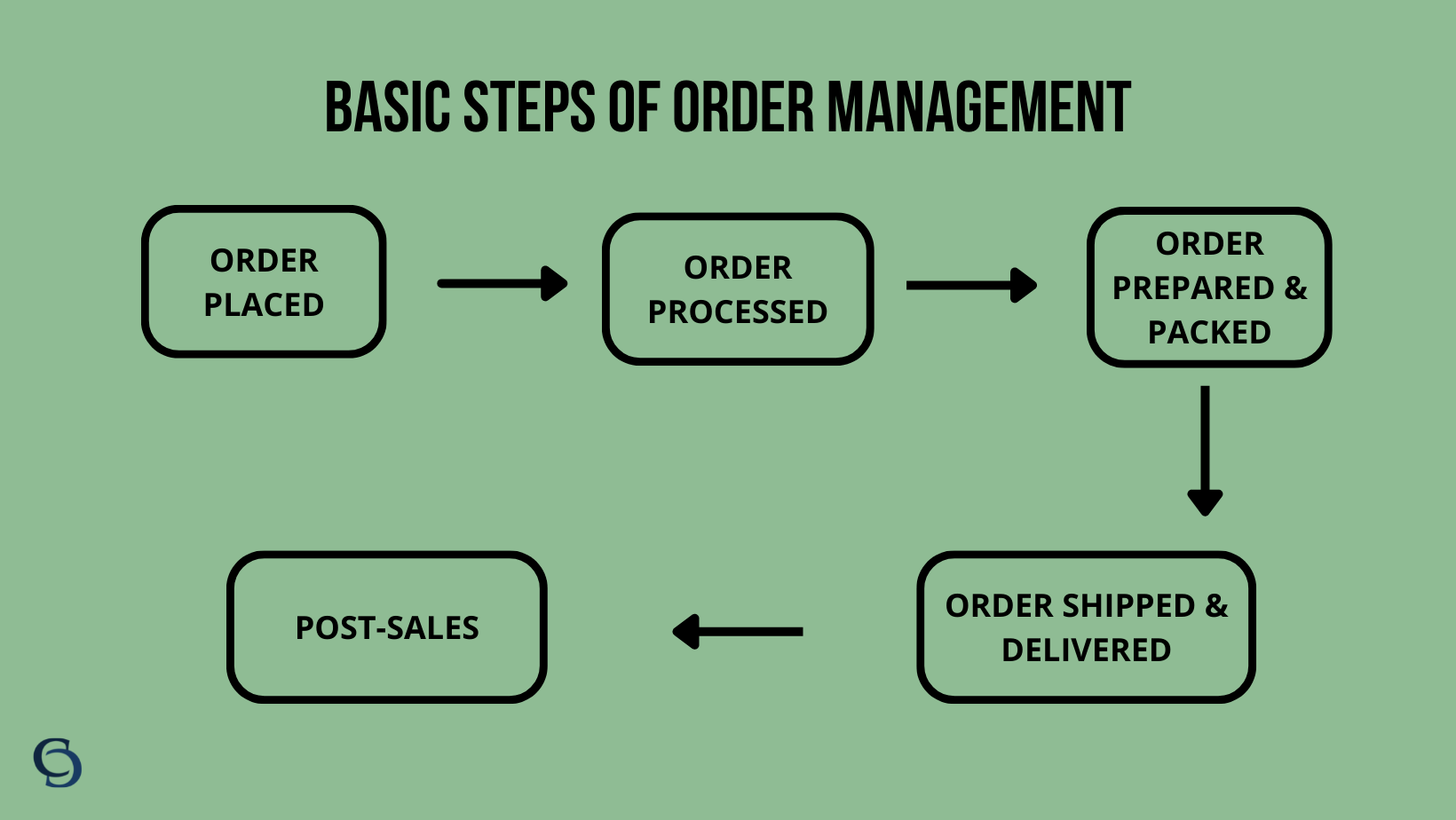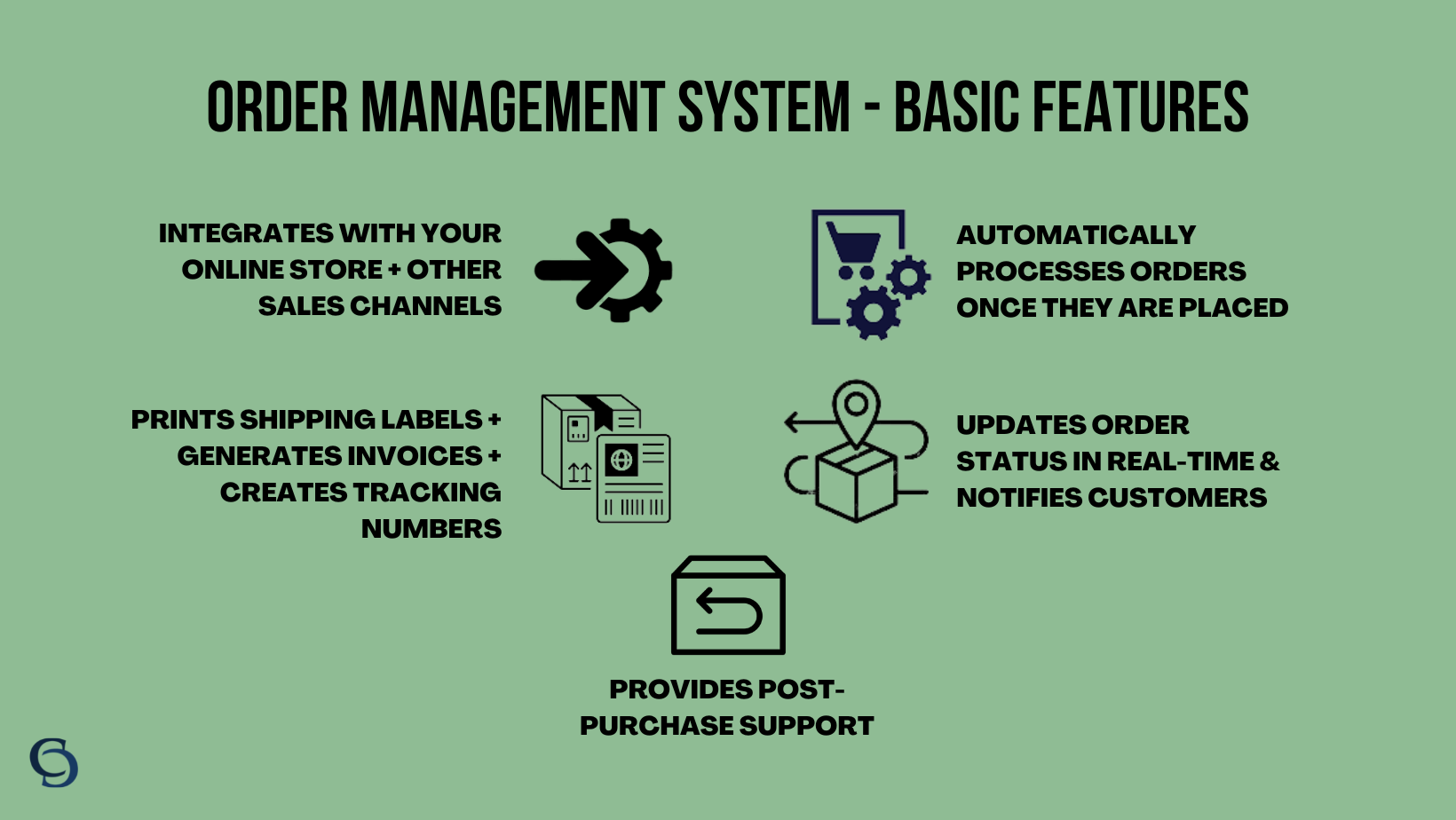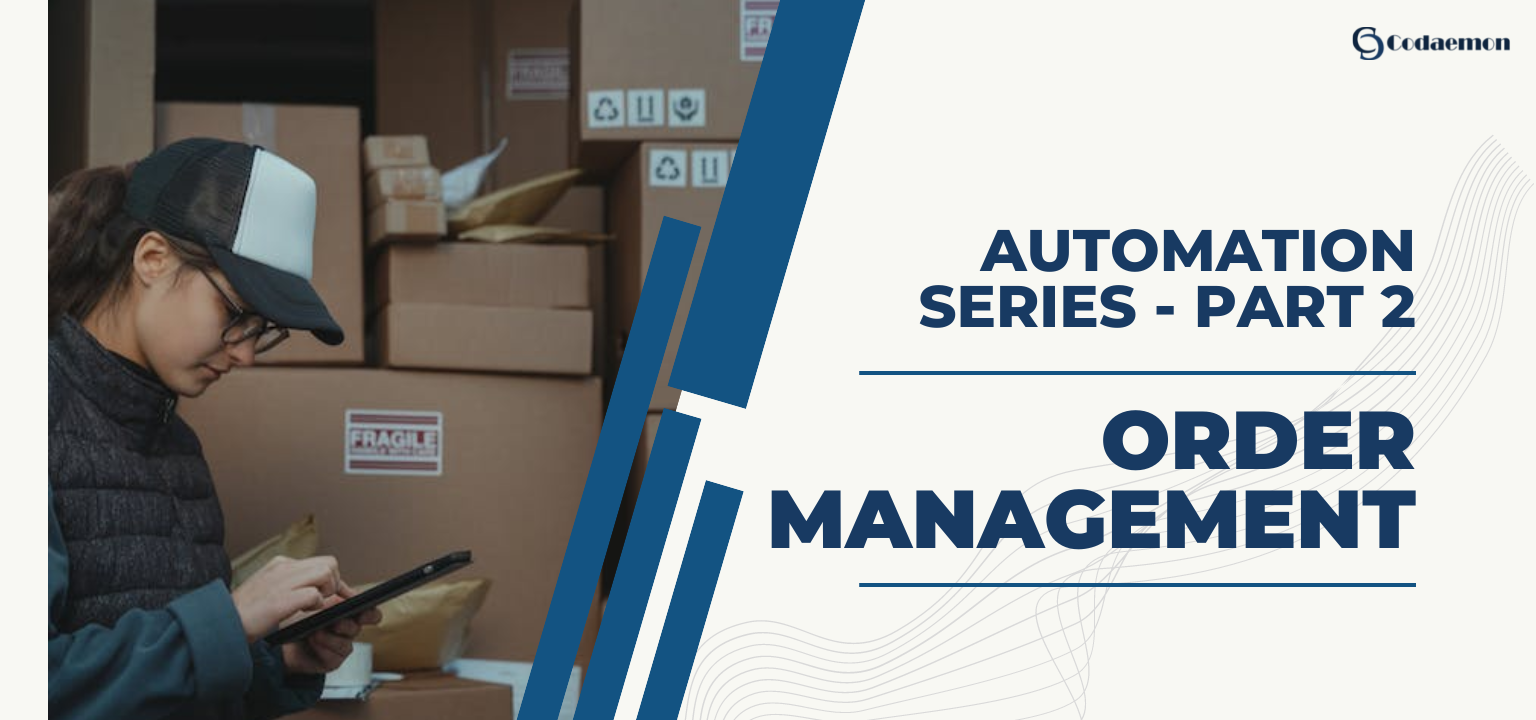Automation Series – Part 2 | How to Automate Order Management
For businesses that are rapidly adopting digital transformation strategies in their workflow, automation has been a key driver. And one of the basic automation areas has been order management. Whether you are an enterprise-level store with multiple sales channels or a D2C mom-and-pop shop, order management is critical to stay in business. Manually handling the process creates difficulties like erroneous data entry, poor tracking, complexities in shipping, lack of transparency in reporting, etc. – all the more reasons why you need to automate order management.
If you have already started down that road, this blog will give you some insights on doing it right.
What Does Order Management Include?
Generally speaking, order management is an umbrella term for all of the processes that go into fulfilling an order and then on to post-sales. Every company runs on different business processes. Naturally, order management is not the same for all. But the core steps as outlined in the following image are common.


Let’s get a little more into the details.
Order Placement – This is where you check for stock availability, capture customer details, check if the customer already exists in your system (if not, then add the details), and process payment information.
Order Processing – Details are verified, the customer is notified about order confirmation, and the order information is passed along to all departments of the business to initiate different processes. For example, the inventory team updates the product stock, the warehouse team checks for the nearest warehouse where the item is in stock, etc.
Preparing & Packaging – This is where the sorting for shipping happens. It ensures that the correct product, quantity, and in-the-box items are put together. The product is then moved along to packaging.
Shipping & Delivery – Generally, this part is handled by a third-party logistics vendor. Here, the shipping details are confirmed, an invoice is generated, the product is further connected for delivery, and the customer is provided with tracking details.
Post-sales – This is where the customer is given access to return information and any support they may need with the product they purchased.
All of these processes in order management are repetitive. A cursory look at the processes also reveals that they can be managed quickly and accurately with technical intervention. This is where automation comes in.
How to Automate Order Management?
Simply put, what an order management system does is interconnect all the touchpoints in the order process, consolidates all data into a single location, and integrates them with all the systems you use. Let’s take a closer look at how an order management system can be used to automate the process.
Inventory Management
Before placing an order, a customer needs to know the availability of the product. When you use an automated order management system, it integrates with your inventory management system to provide accurate stock information. Generally, both these systems have overlapping features and depending on your business, can be used interchangeably. We have written about automating inventory management at length in the first part of this series.
Recommended Read: How to Automate Inventory Management
Order Placement
An automated order management system integrates with all of your online sales channels (Amazon, Etsy, Facebook, etc.) and manages all orders in a single platform. It collects all the information (items, quantities, NAP, shipping method, etc.) and notifies the customer that the order has been placed. A good OMS also enables you to analyze this data to pull trend reports, identify SKU demand by location, make smart restocking decisions, etc.
Order Processing & Fulfillment
When setting up a customer order process, it’s important to pass on information like customer details, coupon codes, location-specific shipping costs, stock levels, etc. to the rest of your supply chain. An automated OMS comes with a warehouse management system that integrates with your e-commerce store and automatically sends order information to the nearest fulfillment center for quick location of the product. It also prints custom packaging labels.
Order Tracking
An OMS integrates with your 3PL partner to monitor the movement of packages after shipment and sends tracking information to the customer. As your package is further connected for delivery, your customers keep getting updates about the location of the package.
Return Management
Product return is one of the crucial areas where customers tend to form a permanent decision of whether to return to or abandon your site. So the return process needs to be as optimized as possible. A good OMS streamlines your return process by offering features like return tracking, collecting information on return reasons, and creating reports.
Related Read: The Case of E-commerce Product Return – Who’s to Blame & Ways to Reduce
Order management systems can also accomplish tasks that aren’t directly related to the process but are a part of it in some ways. The following two tasks are an example:
Send Abandoned Cart Emails
Baymard, a premier UX research institute found that the average cart abandonment rate in 2022 stands at 70%. That’s a lot of missed opportunities. You can utilize your order management software to send personalized emails to shoppers who have abandoned their carts. Many of these systems allow you to customize the wait time as well.
Related Read: 6 Proven Ways to Reduce Shopping Cart Abandonment
Send Reorder Reminders
Why should a contact end after a single purchase? According to business.com, acquiring a new customer is 5 – 10 times more expensive than creating repeat sales through existing customers. What’s more, returning customers spend 67% more on average than new customers, which is quite natural since they already trust you. Depending on the product you sell, if you know when a customer might run out of it, you can automate the workflow to send them reminder emails for reordering with a discount code at the right time.
The following image sums up what a good order management system should be able to accomplish.


If you are using an e-commerce platform, most of the features for order management are built into the system. But if you are using a custom site, you may need to integrate an order management software into your workflow. Additionally, an automated order management system comes with a lot more features than an in-built system that gives you more flexibility and room to scale.
Top software to Automate Order Management Systems
Quickbooks Commerce
Simple and powerful OMS that integrates seamlessly across all major e-commerce platforms and is a great choice for small to mid-sized businesses.
Features:
-
- Creates purchase orders, backorders
- Provides access to multiple channels
- Tracks inventories
- Provides complete overview of order fulfillment process
- Has business intelligence and reporting features
- Accommodates software add-ons
- Can be accessed from anywhere
Brightpearl
Great for managing online and offline orders and easy to use with excellent customer support services.
Features:
-
- Single platform for online & offline orders
- Accommodates multiple fulfillment options like dropshipping, multi-location fulfillment, Fulfillment by Amazon, etc.
- Inventory and warehouse management, CRM, POS, accounting, etc.
- 3PL management
- Barcode printing, scanning, and recognition
- Real-time order entry and synchronization
- Employee management
- Generates business reports on sales channel performance, etc.
NetSuite
Cloud-based order and inventory management tool with services like invoicing, accounting, billing, returns management, sales order management, quote accuracy, etc.
Features:
-
- Order approval based on company policy
- Built-in CRM
- Intelligence to identify optimal shipping location to reduce shipping cost
- Approval handling in real-time
- Customizable dashboard
- Cross-channel inventory
Orderhive
This is a SaaS-based order, shipping, and inventory management software that helps you manage business processes on and off-premise.
Features:
-
- Single dashboard for all orders
- Accommodates re-order, backorder, partial fulfillment, etc.
- Integrates with multiple sales channels and 300+ shipping channels like UPS, FedEx, etc.
- Analytical report to track all business dealings
- Invoicing and payment management
- Multi-currency conversion
- Inventory FIFO-LIFO rules
Skubana
This is a fantastic e-commerce operations platform with built-in automation tools. It handles order processing, inventory management, shipping, etc.
Features:
-
- Integrates with multiple marketplaces and popular 3PL companies
- Automated Orderbots handle real-time order routing to suitable fulfillment centers for savings, real-time rate-shopping, etc.
- Tracking stocks, sales, and shipment
- Detailed data on SKUs, units sold, orders, revenue, etc. and sales reports for decision-making
- Automatic shipment and return labels
- Good customer service
Zoho Order Management
One of Zoho’s large set of business tools, Zoho Order Management integrates well with Zoho Inventory to give you a seamless usage experience.
Features:
-
- Track and manage orders across multiple sales platforms
- Provides the ability to set automated reorder points
- View data on popular products and number of orders at each stage of shipping
- Integrates with 30 shipping services to provide real-time rates
- Generates and prints shipping labels
- Free plan for up to 50 orders per month
Need an Expert to Automate Order Management?
Our strategy consulting team will get on a call with you to understand how your business operates, its goals, and technicalities like the platform you use, integrations, etc. Based on this, our consultants will create a personalized and unbiased list of recommendations to automate your order processing. Through this partnership, you not only get expert help from Codaemon but also manage to remove time and hassle from the research and selection process. Our partnership doesn’t have to end there. You can skip the learning curve by hiring our integration experts to set up the OMS for your platform. Get started by giving us a call at (443) 718-0003 or sending an email to support@codaemon.com.
In case you have missed the first part, you can read it here – Automation Series – Part 1 | Inventory Management


